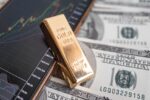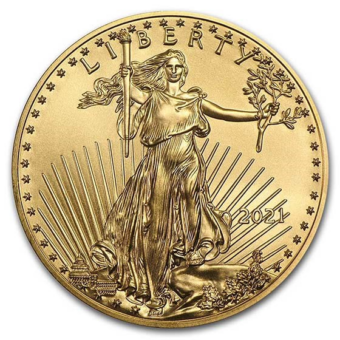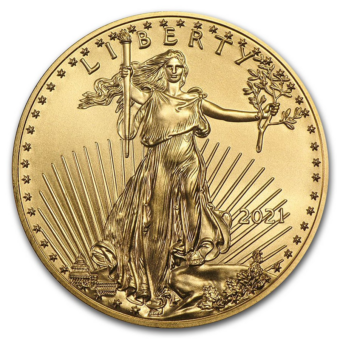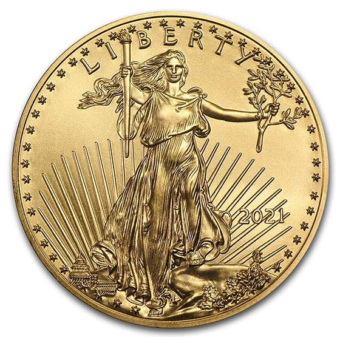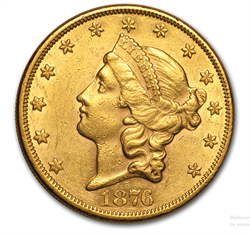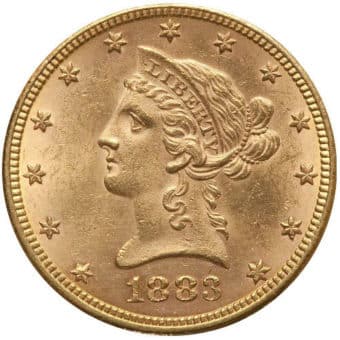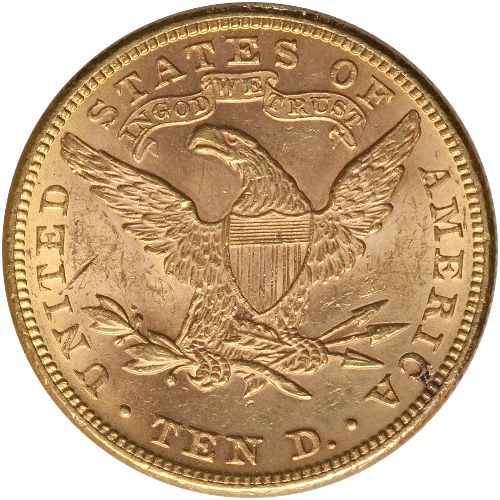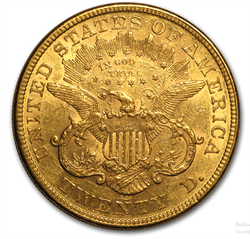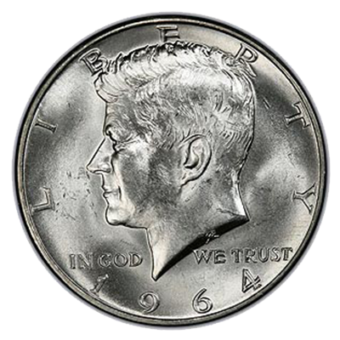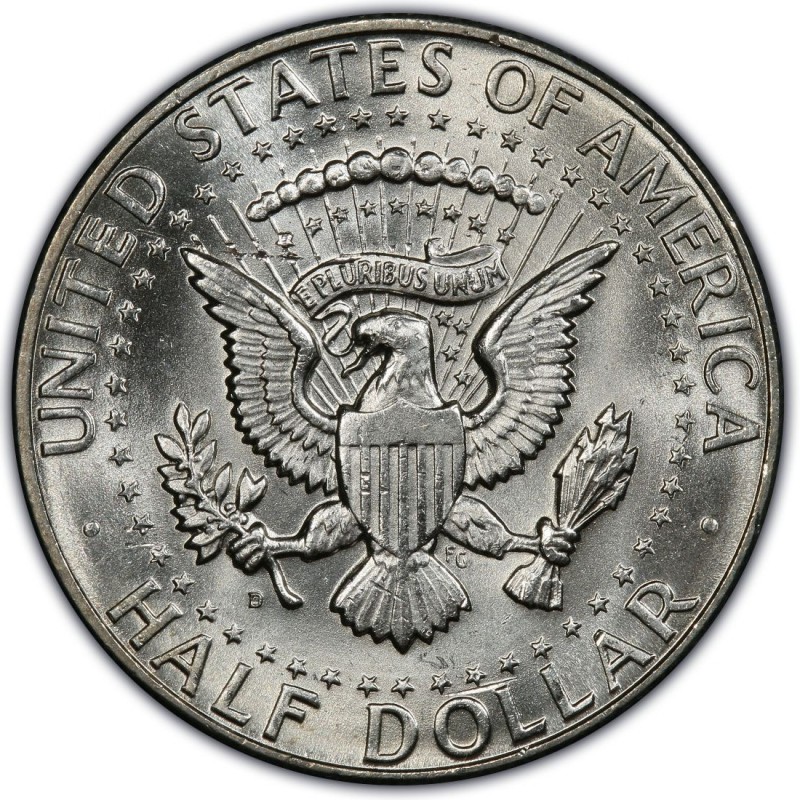The Gold Trail: A Daily Journey Through the Week's Market
Monday - 8.14.23: Gold prices remain flat at $1,916.50 this morning as the summer trading lull continues. Market analyst Coreen Robertson sees gold in a "win-win" situation, as it does well in both a growth with low inflation scenario and a recession scenario. She believes that gold will continue to be supported in the near term, regardless of which economic path is ultimately chosen.
Tuesday - 8.15.23: Gold prices fell as concerns about China's economy and higher interest rates weighed on sentiment. The yellow metal is down $4 to $1,905.50 an ounce. The dollar also strengthened, making gold more expensive for investors holding other currencies. Asset managers and long-term investors have also been reducing their exposure to gold through ETFs. In short, gold prices are under pressure due to concerns about China's economy, higher interest rates, and a stronger dollar.
Wednesday - 8.16.23: Gold and silver prices are little changed in early U.S. trading Wednesday. Both markets hit five-month lows Tuesday and are in a pause mode so far today. The focus remains on China's economy, with the new property prices decline accelerating in July. The key outside markets today see the U.S. dollar index weaker. Technically, the gold bears have the firm overall near-term technical advantage. Same can be said for the silver bears.
Thursday - 8.17.23: Gold prices fell to a five-month low today as U.S. Treasury yields rose and the dollar index strengthened. The Fed's minutes released yesterday showed that the central bank is committed to bringing down inflation, which weighed on gold prices. China's central bank also said it will provide further stimulus to the economy, which could support gold prices in the near term.
Friday- 8.18.23: BRICS summit soon; investors overlooking geopolitics. Many countries observing its potential effects of the US dollar. Watch China: economic slowdown, policy changes, potential geopolitical effects. Rising China-Saudi trade deals. Wall Street may be misjudging Federal Reserve; rates may remain high.
BRICS Summit 2023 Summary:
Location & Date: The 15th BRICS summit will take place at Johannesburg's Sandton Convention Centre from August 22-24.
Key Discussions:
- A primary topic is the potential expansion of BRICS, involving criteria and guiding principles for admitting new members. However, divisions exist among member countries, possibly preventing any significant announcements since decisions are made by consensus.
- China, aiming to strengthen its geopolitical influence amidst tensions with the U.S., champions this expansion. Russia and India are warming up to the idea, whereas Brazil remains skeptical.
- South Africa was the first nation to be incorporated into the BRIC bloc, during the 2011 summit.
- The BRICS alliance represents over 40% of the global population and roughly 26% of the world economy. As an alternative to channels perceived to be dominated by Western powers, its growing influence has attracted interest from many countries, with 23, including Saudi Arabia, Iran, and Argentina, applying for membership.
- Other subjects include global geopolitics, trade, and infrastructure development.
Gold and Silver Prices Rise Amid Market Corrections
Gold and silver prices have seen a modest increase in the early U.S. trading session on Friday. This rise is attributed to short covering and perceived bargain purchases, especially after both metals reached five-month lows earlier in the week. December gold has increased by $7.60, standing at $1,922.80, while September silver is up by $0.10, priced at $22.815.
Factors affecting these markets include increased U.S. Treasury yields and a rallying U.S. dollar index. The 10-year U.S. Treasury note yield recently reached a 15-year high, and the U.S. dollar index achieved a nine-week peak. However, the U.S. dollar index is currently slightly weaker due to a pullback, and the 10-year U.S. Treasury note yield is at 4.23%, slightly below its weekly high.
The U.S. stock market indicators suggest potential weaker openings, with recent rallies facing downturns. A significant factor behind this shift is China's weakening economy, negatively impacting the metals market by hinting at reduced demand. The upcoming months of September and October are historically considered turbulent for the stock market.
Rising U.S. Treasury Yields and China's Economic Struggles: A Double Blow to Global Markets and Gold
The U.S. 10-year Treasury yield rose to its highest level in 10 months, reaching 4.312% on Thursday, due to strong data on U.S. domestic demand and fears that U.S. interest rates could remain elevated. The spike was also influenced by China's ongoing economic challenges, causing global stocks to slump to five-week lows. U.S. retail sales data was robust earlier in the week, with a projection showing the U.S. economy growing at a 5.8% annualized rate in Q3. Additionally, the rising yields have had a standard impact: bolstering the dollar while pressuring equities. China's economic recovery post-pandemic has been stumbling, with issues in the property sector and in their shadow banking sector. Commodities, especially gold, have been affected by the rise in rates, with gold prices hitting a five-month low.
The sharp rise in the U.S. 10-year Treasury yield could have implications for the gold market. Historically, gold, a non-yielding asset, becomes less attractive when yields on bonds increase, because they offer a return while gold does not. The article indicates that gold has already experienced a dip, touching a five-month low. If yields continue to rise or remain elevated, we could see further downward pressure on gold prices, as investors might favor yield-generating assets over non-yielding ones like gold. Additionally, the strength of the U.S. dollar, underpinned by the higher yields, typically has an inverse relationship with gold. A stronger dollar can make gold more expensive for foreign investors, potentially limiting its demand. As such, stakeholders in the gold market should monitor U.S. economic data and policy decisions closely, as they can influence the trajectory of Treasury yields and, by extension, gold prices.
Mortgage Rates Hit 21-Year Peak: Potential Ripple Effect on Safe Havens?
Mortgage rates in the U.S. have surged to their highest levels since 2002, with a 30-year fixed-rate home loan now standing at 7.09%, as revealed by Freddie Mac. This increase is a consequence of the Federal Reserve's rigorous interest rate hikes aimed at curbing inflation. As the housing market grapples with rising costs and declining sales – existing home sales in June dropped by 18.9% year-on-year – there is potential for investors to pivot towards other stable “real” assets like gold (and other commodities). Traditionally, in times of economic uncertainty or volatility, gold is viewed as a 'safe haven' investment. With real estate becoming less appealing due to higher mortgage rates, it remains to be seen if this will redirect investments towards safe haven assets.
Gold Stability Amid Positive Philly Fed Manufacturing Survey
Gold prices are hovering around the significant $1,900 mark, with no distinct direction from either buyers or sellers, following an unexpected positive report from the Philadelphia Federal Reserve. The regional central bank reported a considerable boost in its manufacturing business outlook for August, registering a value of 12, in stark contrast to July's -13.5 reading. This surge surpassed economists' predictions, which anticipated only a modest shift to -10. August marked the end of an eleven-month streak of negative readings for the survey. In response to this data, gold experienced a modest shift, last noted at $1,898.90 an ounce, marking a 0.37% decline for the day. The survey components presented a mixed picture: The New Orders Index showcased remarkable growth, while the Shipments Index also shifted into positive figures. However, the labor market component experienced a downturn. Additionally, there was an evident increase in inflationary pressures, signaled by a rise in the Prices Paid Index, warranting attention from Federal Reserve observers.
China's Undisclosed Gold Purchases: A Long-term Bullish Trend for the Market?
Despite already acquiring 126 tonnes of gold in 2023, China's actual gold reserves, encompassing both private and central bank holdings, may be considerably larger than official figures indicate, according to a report by BMO Capital Markets. The analysts believe that geopolitical concerns and hedging against U.S. dollar dominance are key motivators behind these acquisitions. The People's Bank of China (PBoC) currently holds 2,113.50 tonnes of gold, which is about 3.8% of its total reserves. Speculations abound that the central bank is aiming to boost this to at least 5%. With the changing geopolitical climate, BMO suggests China's targets might be even more ambitious, potentially aligned with the nation's M2 money supply. The true extent of China's gold holdings remains elusive, especially with potentially unreported reserves. Nevertheless, BMO analysts forecast that China's consistent and long-term gold purchasing will support the gold market's upward trajectory and might also pique interest among retail investors.
Bitcoin Plummets After SpaceX Valuation Reports
Bitcoin witnessed a sharp decline late Thursday, dropping as much as 9% to just slightly above the $26,000 mark. This decline followed a report by The Wall Street Journal that Elon Musk's space company, SpaceX, reduced the valuation of its bitcoin assets by $373 million across 2021 and 2022 and had offloaded the cryptocurrency. Bitcoin was priced at approximately $26,839.24, marking an around 8% fall by 7:20 p.m. ET. Ryan Rasmussen from Bitwise Asset Management described the situation as one of the most intense rapid sell-offs in Bitcoin's history, hinting that it could be a reaction to the SpaceX news. This comes despite Elon Musk's historical backing of cryptocurrencies, having made significant investments through Tesla and having influenced crypto markets through his mentions on social platforms. Prior to this incident, Bitcoin was already facing challenges following the release of minutes from the Federal Reserve's July policy meeting.
Rising Solar Sector and Industrial Demand Set to Eclipse Gold in Coming Years
Silver's prospects are projected to outshine gold's in the medium term due to a recovery in industrial demand and a thriving solar sector. Colin Hamilton from BMO Capital Markets indicates that the gold:silver ratio will move closer to its historical average in the upcoming years. While the near-term outlook for silver is influenced by macroeconomic factors, it's also impacted by a slump in manufacturing which directly affects silver since industrial demand comprises over 50% of total silver demand. However, silver's significant role in the global photovoltaic (solar energy) expansion is expected to boost its industrial demand by approximately 100Moz annually through 2030. Given the rapid growth of green energy applications, the silver market may face a continual structural deficit in the near future.
Understanding Spot Prices in Simple Words
Alright, so you want to understand spot prices? No problem! Let's break it down.
- What's a Spot Price?
Spot price is like the current sticker price on an item in a store, but for assets like gold or stocks. It's the price you'd pay right now if you wanted to buy it. While this price can change depending on where you are, with today's global economy, it's mostly the same all over the world, thanks to exchange rates.
- Where are Gold and Silver Spot Prices Determined?
There are two main "markets" or places where these prices get figured out:
Over-the-Counter (OTC):
- Think of OTC like a big online network where traders make deals with each other directly.
- It’s kind of private; deals are made over the phone or through software platforms.
- The prices here aren't made public, so to get an idea of the spot price, traders use services like Reuters or Bloomberg, which show a sort of "average" of these private deals.
- This average isn't a promise to sell at that price, but it's generally what you can expect.
Futures Exchanges:
- These are public places where traders agree on prices for future deliveries.
- The biggest one is the US COMEX.
- Sometimes, the futures price is used as the spot price. It's not always precise, but for a regular person buying gold or silver, it feels like the spot price.
- Which Market Sets the Gold Price?
While the OTC and futures prices affect each other, it's debated which one has the most influence. This isn't constant; it changes over time. For context, the London OTC market trades more gold than the COMEX, but both are influential.
- How Bullion Dealers Set Their Spot Price:
Bullion dealers are the people selling gold to us. When they set their price:
- They check the OTC and futures prices.
- They consider how these prices might change while they're making deals.
- They think about their costs and fees.
- To cover all these factors, they add a little extra to the price, like a safety cushion.
Note: The spot price is separate from any other fees or premiums, like the cost to make gold bars or coins.
- How to Know if You're Getting a Fair Price:
Each dealer might offer a different price, which can be confusing. But, just like shopping for a TV, the best way to know if you're getting a good deal is to compare prices from different sellers. When you do that, you're part of the big OTC network!
The Bottom Line
Understanding spot prices is about knowing the current price and where it comes from. If you're looking to buy precious metals, it helps to shop around, just like any other purchase.
Next Week’s Key Events
MONDAY, AUG.21
- No releases scheduled
TUESDAY, AUG.22
- 10:00 am: Existing Home Sales for July
How might this impact precious metals?
Existing home sales can indicate consumer confidence and overall economic health. A strong report might boost the dollar, potentially pressuring precious metal prices, while a weak report could have the opposite effect, supporting metals as a safe haven.
WEDNESDAY, AUG.23
- 9:45 am: S&P flash U.S. services PMI for August
- 10:00 am: New Home Sales for July
How might this impact precious metals?
Service PMIs gauge the health of the services sector, and a high PMI could indicate economic expansion. A thriving economy might lift the dollar and weigh on metals. Similarly, new home sales can hint at economic vitality. Robust sales could exert downward pressure on metals, while sluggish sales could bolster them.
THURSDAY, AUG.24
- 8:30 am: Initial Jobless Claims for Aug. 19
- 8:30 am: Durable-Goods Orders for July
How might this impact precious metals?
Initial jobless claims can provide insights into the labor market's health. Fewer claims might bolster the dollar and hinder precious metals, while increased claims could benefit metals. Durable-goods orders, meanwhile, can reflect economic activity and business confidence. A rise might depress metals, whereas a decline could be favorable for them.
FRIDAY, AUG.25
- 10:00 am: Consumer Sentiment for August
How might this impact precious metals?
Consumer sentiment is a proxy for consumer spending tendencies. Positive sentiment can strengthen the dollar, which might be detrimental to precious metals. Conversely, negative sentiment might enhance the appeal of metals as a safe-haven asset.




